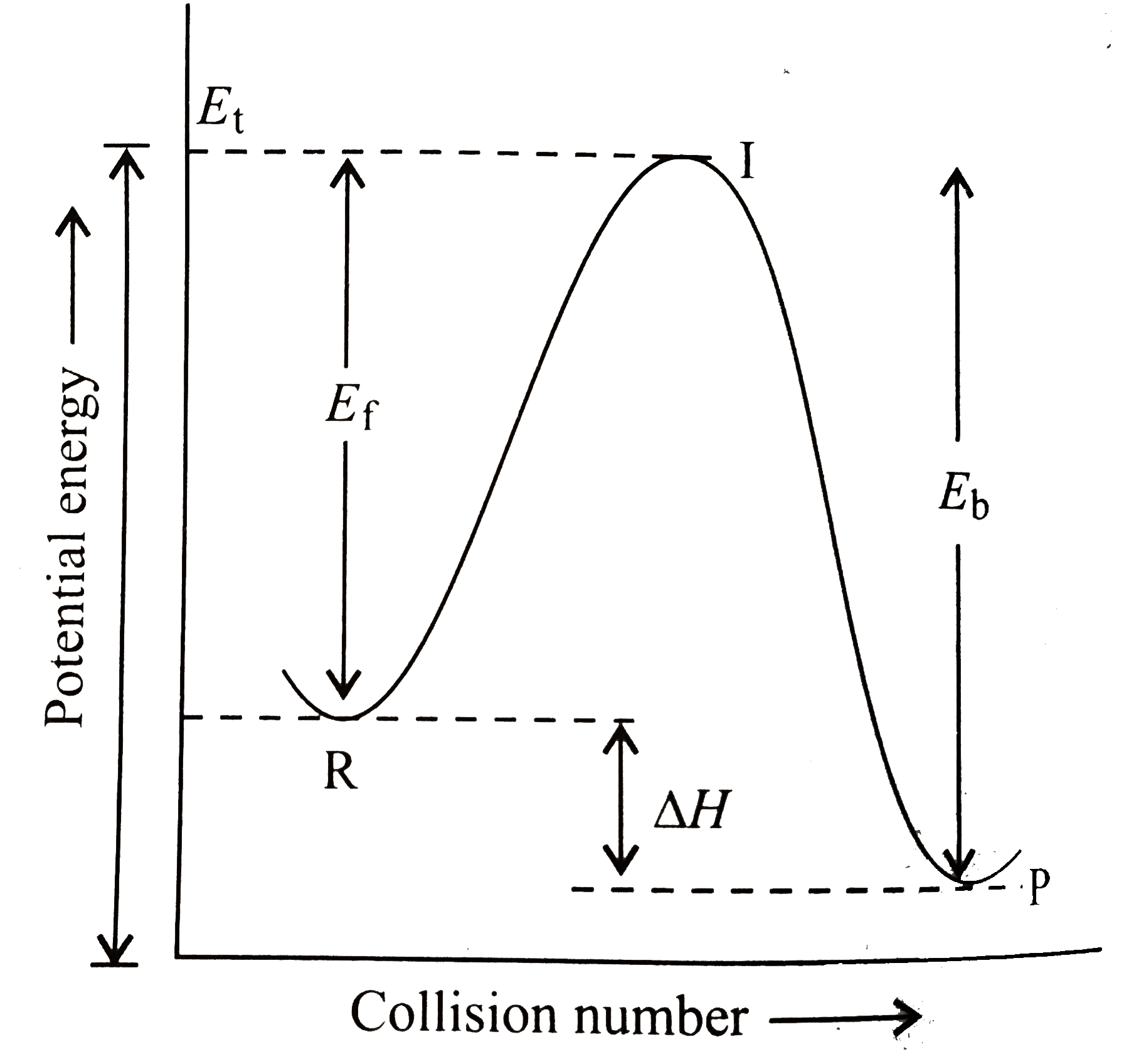For a reaction Ak−−→ product, the reaction occurs as : Ak1−−→A∗k2−−→B∗k3−−→ product
The overall rate constant k is given as: k=2k1(k2k3)2/3
If Ea1, Ea2 and Ea3 are the activation energies of these steps, then what is the relation between overall activation energy Ea and the activation energies of these steps.Solution in Punjabi
Step by step video & image solution for For a reaction A overset (k) rarr product, the reaction occurs as : A overset (k_1) rarr A^(**) overset (k_2) rarr B^(**) overset (k_3) rarr product The overall rate constant k is given as: k= 2k_1 (k_2/k_3)^(2//3) If E_(a1), E_(a2) and E_(a3) are the activation energies of these steps, then what is the relation between overall activation energy E_(a) and the activation energies of these steps. by Chemistry experts to help you in doubts & scoring excellent marks in Class 12 exams.
Updated on:21/07/2023Topper's Solved these Questions
- CHEMICAL KINETICSBOOK - MODERN PUBLICATIONCHAPTER - CHEMICAL KINETICSEXERCISE - EXERCISE
531 Videos
- BIOMOLECULESBOOK - MODERN PUBLICATIONCHAPTER - BIOMOLECULESEXERCISE - EXERCISE
503 Videos
- CHEMISTRY IN EVERYDAY LIFEBOOK - MODERN PUBLICATIONCHAPTER - CHEMISTRY IN EVERYDAY LIFEEXERCISE - EXERCISE
352 Videos
Similar Questions
How can we express the rates of following reactions in terms of concentration of reactants and products ?
2O3↔3O2
View SolutionComplete the following statement- Uses for solder are-
View SolutionTrue or False : Equanil, used as tranquilizer, is a derivative of barbituric acid.
View SolutionA colliison between reactant molecules must occur with a certain minimum energy before it is effective in yielding Product molecules. This minimum energy is called activation energy Ea Large the value of activation energy, smaller the value of rate constant k. Larger is the value of activation energy, greater is the effect of temperature rise on rate constant k.

Ef= Activation energy of forward reaction
Eb= Activation energy of backward reaction
ΔH=Ef−Eb
Ef= threshold energy
For two reactions, activation energies are Ea1 and Ea2, rate constant are k1 and k2 at the same temperature. If k1>k2, then
View SolutionA reactant (A) forms two products A overset (k_(1))rarr B , Activation energy E_(a1) A overset (k_(2))rarr C , Activation energy E_(a2) If E_(a_(2)) = 2E_(a_(1)) then k_(1) and k_(2) are related as
View SolutionFor a complex reaction A overset(k) rarr products E_(a1)=180kJ //mol e,E_(a2)=80kJ//mol ,E_(a3)=50kJ//mol Overall rate constant k is related to individual rate constant by the equation k=((k_(1)k_(2))/(k_(3)))^(2//3) . Activation energy ( kJ//mol ) for the overall reaction is :
View SolutionFor a reaction, if effective rate constant k' is given b
k=2k2k3(k1k5)1/5
where k1,k2,k3,k5 are rate constants for different steps of the reaction
The effective activation energy is
View SolutionFor a reaction taking place in three steps, the rate constant are k1,k2 and k3 and overall rate constant is k=k1k3k2. If the energies of activation E1, E2 and E3 are 60, 30 and 10 kJ mol−1 respectively, then the overall energy of activation is:
View SolutionA reactant (A) forms two products : A overset(k_(1))(rarr)B Activation Energy E_(a_(1)) A overset(k_(2))(rarr)C Activation Energy E_(a_(2)) If E_(a_(1)) then k_(1) and k_(2) are related as :
View SolutionIn the sequence of reaction A overset(k_1) rarr B overset(k_2)rarr C overset(k_3) rarr D K_3>K_2>K_1 , then the rate determining step of the reaction is
View Solutionएक अभिकारक (A) दो उत्पाद देता है :
Ak1−−→B , संक्रियण ऊर्जा Ea1
Ak2−−→C , संक्रियण ऊर्जा Ea2
यदि Ea2=2Ea1, तब k1 तथा k2 आपस में इस प्रकार सम्बन्धित हैं :-
View SolutionFor a complex reaction Ak−−→products
Ea1=180kJ/mole,Ea2=80kJ/mol,Ea3=50kJ/mol
Overall rate constant k is related to individual rate constant by the equation k=(k1k2k3)2/3. Activation energy (kJ/mol) for the overall reaction is :
View SolutionA reactant (A) forms two products A overset (k_(1))rarr B , Activation energy E_(a1) A overset (k_(2))rarr C , Activation energy E_(a2) If E_(a_(2)) = 2E_(a_(1)) then k_(1) and k_(2) are related as
View SolutionA reactant (A) forms two products
Ak1−−→B, Activation energy Ea1
Ak2−−→C, Activation energy Ea2
If Ea2=2Ea1 then k1 and k2 are related as
View SolutionFor a complex reaction A overset(k) rarr products E_(a1)=180kJ //mol e,E_(a2)=80kJ//mol ,E_(a3)=50kJ//mol Overall rate constant k is related to individual rate constant by the equation k=((k_(1)k_(2))/(k_(3)))^(2//3) . Activation energy ( kJ//mol ) for the overall reaction is : a) 100 b) 43.44 c) 150 d) 140
View Solution
